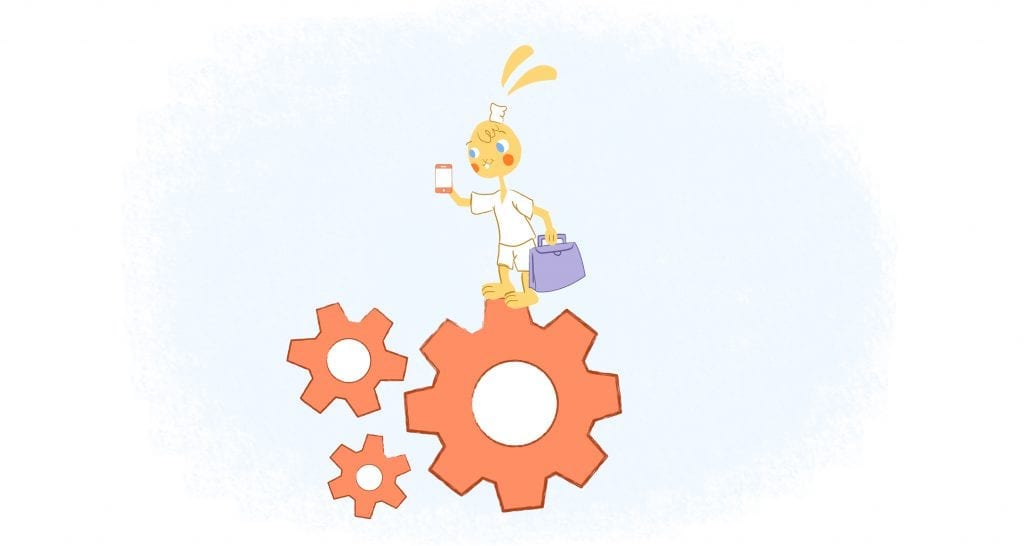

Have you ever encountered a leader physically there but mentally miles away? Besides being frustrating, this leaves you feeling undervalued and unheard.
In addition, being an effective leader requires you to be fully present. However, it is an often overlooked skill critical to success.
To be fully present, you must actively engage with the situation. It involves listening closely to others and observing their needs in the moment. By cultivating this ability, leaders can enhance their effectiveness and positively impact their teams.
The Importance of Being Present
What makes this important? Some of the reasons are as follows:
- Developing deeper connections. It is human nature to crave authenticity and connection. You will build trust and respect between you by showing up fully present, actively listening, and acknowledging what they have to say. As a result, the work environment becomes more positive and collaborative.
- Smarter decisions. It is easy to react impulsively in the heat of the moment. You can gather information and analyze the situation by staying present and making informed decisions that benefit the entire team.
- Improved morale. It is your energy that drives your team forward. They feel motivated and inspired to do their best work when you invest in their success. Alternatively, a disengaged leader can inadvertently demotivate the team.
- Solving problems proactively. By staying present, you can pick up on subtle cues and potential issues. In the long run, you can save time and resources by identifying challenges early on.
- Being a positive role model. Actions speak louder than words. Seeing you fully engaged will encourage your team to model the same behavior, thus enhancing communication and collaboration.
Also, as noted in an HBR piece, “To truly engage other human beings and create meaningful connections, we need to silence our inner voices and be fully present — and being more mindful can help.” To do this, discipline and skill are required.
Cultivating the Mindset of Presence
The first step to becoming more present is to establish the right mindset. Being present extends beyond physical presence; it involves engaging consciously. By this, I mean paying attention to the person you’re interacting with, putting aside mental distractions, and showing a genuine interest in what they’re saying.
The following steps will help you cultivate a presence mindset.
- Practice mindfulness. You can focus better on the present moment through meditation and deep breathing techniques.
- Set clear boundaries. You can minimize distractions by silencing notifications, setting aside dedicated times for focused work, and letting others know when you need uninterrupted time.
- Develop genuine curiosity. Embrace interaction with an open mind and a desire to understand others’ perspectives.
Putting Presence into Practice
In order to demonstrate presence with your team, let’s explore some practical ways to do so.
1. Practice active listening.
To truly be present, you must listen actively. Pay close attention, ask clarifying questions, and provide non-judgmental feedback. Also, it’s essential not to interrupt or formulate your response while someone is talking.
Active listening is simply paying attention to what others say, both verbally and non-verbally. It is also important to try to understand the message they are trying to convey.
- Maintain eye contact. Doing this demonstrates that you are engaged and interested in what the speaker has to say.
- Use encouraging body language. Be attentive by nodding your head, avoiding fidgeting, and leaning in slightly.
- Minimize interruptions. Before responding, allow the speaker to finish their thoughts.
- Ask clarifying questions. As a result, you’ll show you’re engaged and ensure you understand the message correctly.
2. Minimize multitasking.
Despite the apparent benefits of multitasking, research shows that it actually decreases productivity and focus. The reason? The more you switch between tasks, the more errors you make and the more time you waste. Additionally, your attention is divided.
Monotasking is a better alternative. Focus on specific tasks and avoid distractions like social media or phone notifications. As a result, you can be fully present in the moment and give your team your undivided attention.
3. Communicate with focus.
Listening is only part of being present; clear and intentional communication is also part of it.
As an example, nonverbal communication is crucial beyond spoken words in how you are perceived by your team. As such, keep an open posture, smile authentically, and make eye contact. It is possible to convey interest, engagement, and approachability through these subtle cues.
You can also communicate clearly and intentionally in the following ways.
- Articulate your thoughts concisely. Don’t ramble or go off on tangents; focus on conveying your point clearly.
- Tailor your communication style. Adapt your communication style to your audience.
- Be mindful of your tone. Your nonverbal cues, such as your tone of voice, can significantly impact how your message is received.
- Keep cultural differences in mind. Open postures in one culture may be considered disrespectful in another. It’s best to be culturally aware and sensitive whenever you send nonverbal cues.
4. Prioritize face-to-face interaction.
Although technology facilitates instant communication, it can also hinder genuine connection. That said, face-to-face interactions with your team should be prioritized whenever possible.
To discuss individual challenges and goals, scheduling regular or one-on-one meetings may be beneficial. It can also be as simple as walking over to a colleague’s desk rather than relying solely on email or instant messaging.
Engaging face-to-face allows greater engagement, will enable you to read non-verbal cues, and fosters team spirit and camaraderie.
5. Create opportunities for connection.
Rather than relying on formal meetings and emails, make genuine connections with your teammates by doing the following:
- Organize team-building activities. Establish opportunities for your team to bond and build relationships outside of the workplace. Alternatively, you could volunteer together.
- Celebrate birthdays and special occasions. Birthday celebrations, for example, allow your team to come together, have fun, and take a break. By injecting positivity into the workplace, spirits are lifted, and overall morale is raised.
- Offer help and support. Whenever needed, be available to answer questions, provide guidance, or provide support.
6. Promote open communication and feedback.
Open communication and feedback are crucial to build trust and foster a safe space for sharing ideas.
- Solicit feedback regularly. It is important that you encourage your team to provide constructive feedback on your leadership style, projects, and overall work environment.
- Be receptive to feedback. Take criticism in stride. Rather than seeing it as a setback, view it as a learning opportunity.
- Diverse perspectives should be embraced. Actively seek input from different team members. As a result, the team is able to tap into its collective wisdom and diverse perspectives as well as foster inclusivity.
- Acknowledge and address concerns promptly. Make sure you don’t ignore team members’ concerns or issues.
- Maintain regular check-ins. To ensure everyone has a chance to voice their concerns, ask questions, and provide feedback, plan regular one-on-one meetings or small group discussions.
- Embrace Informal Interactions. In addition to formal meetings and working environments, encourage casual conversations and interactions. This informal exchange can create a more open and supportive work environment.
7. Celebrate milestones (big and small).
Taking the time to recognize and celebrate team and individual achievement strengthens team morale. It also fosters a feeling of belonging and connection between your team members when you recognize their contributions.
Furthermore, sharing small victories with those who contributed to them strengthens a team and fosters unity.
8. Promote mindfulness in the workplace.
Practicing mindfulness, such as meditation or short breathing exercises, can help you become more aware of your feelings and thoughts. As a result, you will be able to focus better and feel less stressed.
Make sure your team incorporates mindfulness practices into their daily routines. By doing so, they can communicate and collaborate better because they will be more active in the present moment.
9. Use technology mindfully.
Technology can be an effective tool for communicating and collaborating, but it can also distract us—case in point text messaging. One of my pet peeves is people glued to their phones when I’m trying to have a conversation with them. It’s not only disrespectful; it also wastes my time if I have to repeat myself.
Also, texting can lead to misunderstandings. Even worse, “it encourages passive — or more often passive-aggressive — behavior, what I call ‘hit and runs,’” states psychologist Maggie Mulqueen, Ph.D. “Typing on a screen invites impulsive responses. Absent the ability to see the reflection of pain or hurt on someone’s face, it’s easy for people to pound out anger or meanness.”
Mulqueen adds that you don’t have to take a breath or risk interruption, but what might be helpful to one person ends up overwhelming another.
To that end, here are some ways you can be more mindful of technology:
- Set boundaries around technology use. Create an etiquette-based communication system that encourages focused work sessions with no distractions.
- Utilize technology for connection. For remote collaboration, utilize technology effectively, such as video conferencing.
- Silence the distractions. During meetings and conversations, minimize interruptions. You can do this by silencing notifications, putting devices away, and blocking distracting sites with tools like website blockers.
- Promote a culture of digital wellness. Ensure your team is taking breaks from technology and prioritizing their mental health.
10. Develop a sense of empathy and understanding.
Your ability to be present with your team members can be greatly enhanced if you take the time to get to know them on a deeper level. When you acknowledge their strengths and weaknesses, as well as their personal circumstances, you create a comfortable environment for them to share their perspectives.
- Practice empathy. Take the time to understand the experiences and perspectives of your team members. In order to do so, you must actively listen to them, consider their viewpoint, and demonstrate compassion. You will be able to better understand their motivations and challenges by putting yourself in their shoes.
- Celebrate individual differences. Accept your team members’ diverse backgrounds, experiences, and perspectives. As such, give them recognition and value for their strengths and contributions. The result is a more diverse and supportive work environment and a richer team dynamic.
- Offer support and guidance. Whenever needed, be available to offer guidance and support. They may need assistance navigating challenging situations, feedback and mentorship, or simply a listening ear.
11. Be flexible and adaptable.
There is no need to be rigid or inflexible when you are present. It is important to understand that unexpected circumstances may arise and be prepared to adjust your schedule as necessary.
Whenever a team member requires your immediate attention, take a step away from other tasks so they can receive your full attention.
12. Make yourself available and accessible.
Be available to your team members via various communication channels like email, text, or Slack as well as in person. As a result, they will feel more comfortable approaching you with concerns or suggestions, demonstrating your commitment to open communication.
At the same time, that doesn’t mean you have to be available 24/7. After all, that will only lead to burnout. But, you should be accessible during business hours at the minimum.
Conclusion
These tips can help you cultivate a more present and engaged relationship with your team, ultimately resulting in a more productive and fulfilling workplace.
FAQs
Why is it important to be present with my team?
Trust, collaboration, and a sense of belonging are enhanced when present with your team. As a result, your team becomes more engaged and productive because they know you value their work.
How can I tell if I’m not being present with my team?
The following are signs that you are not present:
- You’re multitasking during meetings.
- Keeping an eye on your phone or email all the time.
- While team members are speaking, you don’t make eye contact with them.
- Actively ignoring their concerns or ideas.
How can I be more present in meetings?
- Minimize distractions. Avoid multitasking, put away your phone, and close unnecessary tabs.
- Actively listen. Avoid interrupting others, maintain eye contact, and show attentive body language.
- Ask open-ended questions. You should encourage your team members to participate and engage in deeper discussions.
- Summarize key points. As a result, you can show that you are engaged and put everyone on the same page.
What are some additional tips for maintaining a presence with a remote team?
- For individual conversations and meetings, use video conferencing.
- Clearly communicate expectations and channels of communication.
- Make virtual team-building activities a regular part of your schedule.
- Invest in tools that encourage collaboration and communication online.
How can I manage a busy workload and remain present for my team?
- Prioritize effectively. Don’t be overwhelmed by tasks, and delegate where you can.
- Set boundaries. Keep track of your time and communicate when you must devote more time to focused work.
- Embrace mindfulness. By taking short breaks throughout the day, you will be more present and refreshed when you return to work.
Image Credit: fauxels; Pexels











John Rampton
John’s goal in life is to make people’s lives much more productive. Upping productivity allows us to spend more time doing the things we enjoy most. John was recently recognized by Entrepreneur Magazine as being one of the top marketers in the World. John is co-founder and CEO of Calendar.